How do you teach place value in a way that kids will understand? Place value can be a tricky concept, but these simple hands-on activities will definitely help! Use playing cards, base 10 blocks, and other simple materials to teach kids the concept of place value.
These place value activities are perfect for second grade, or 7-8 year olds. You can also simplify the activities to just tens and ones for kindergarten and first grade.
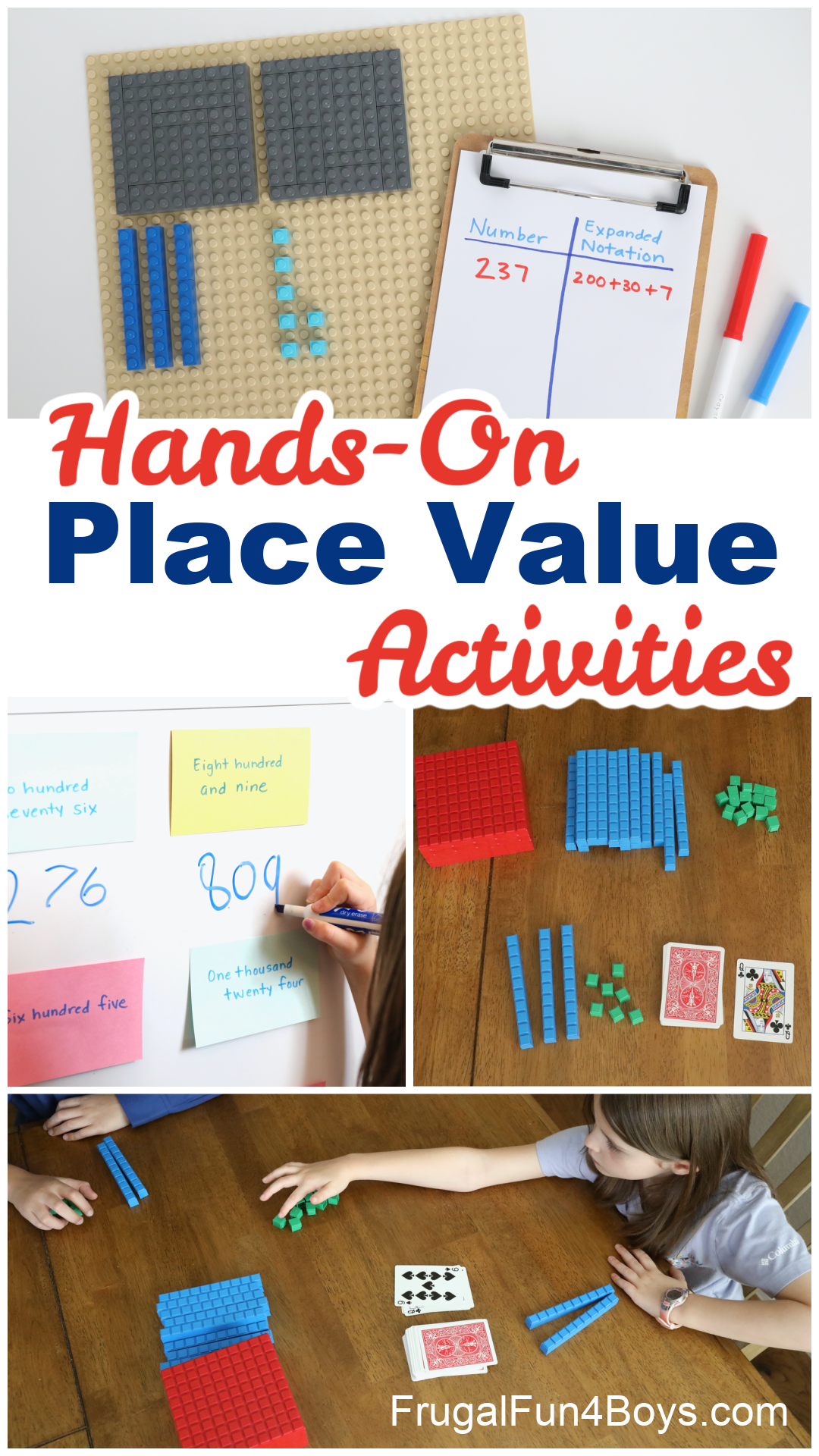
Place Value Activity #1: Race to 100 with Base 10 Blocks
This game is first because it’s just so valuable! In addition to helping kids understand place value, this activity also gets them ready for addition and subtraction with borrowing and carrying. Throughout the game, they’ll be doing just that, but with hands-on blocks instead of pencil and paper.
I made this game up on a whim one day, and my kids loved it!
Materials Needed: A deck of cards and a set of base 10 blocks.
First, remove one suit of red cards from your deck. So, remove either all the hearts or all the diamonds.
Then set up to play. Each player should have two ten rods and five ones, so 25.
The amount of players that can join in will depend on how many base 10 blocks you have. We used the blocks from our Math-U-See manipulatives set. Our game worked well with two players, and okay with three (the first round with three was great, but we had to make some creative trades on the second round).
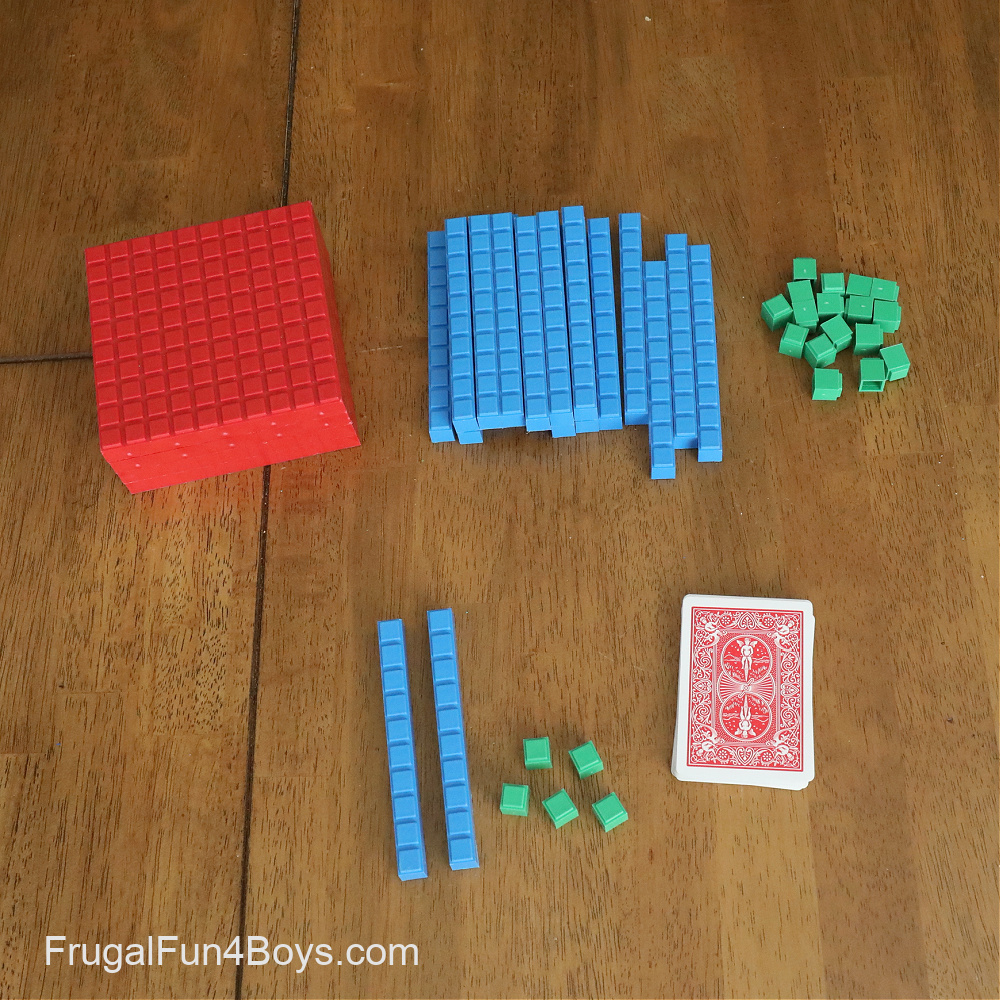
Player 1 starts the game by drawing a card.
If the card is black, they get to add that many ones.
If the card is red, they must take away that many ones.
The player below drew a queen, so they added one ten rod and two ones.
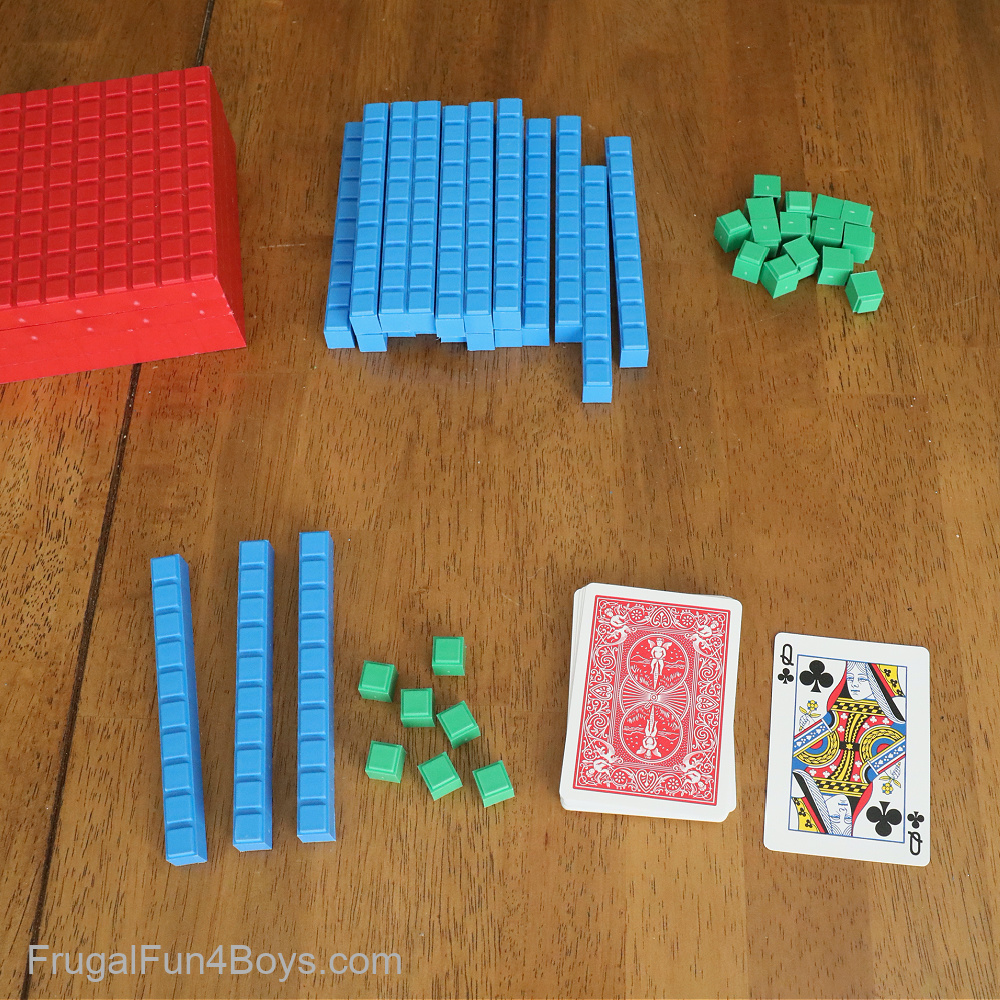
Once you’ve accumulated more than 10 ones, you must trade for another ten rod!
And if you need to give back more ones that you have, you’ll need to trade one of your ten rods for ten ones so that you can pay them back. For example, if you have 3 tens and 2 ones and need to give back 5, you’ll first need to trade a ten rod for 10 ones before you can give 5 ones back.
The player to trade up to a 100 block first is the winner!
Place Value Activity #2: LEGO Place Value
In this activity, kids will represent three digit numbers with LEGO bricks. Then, they can write the number in expanded notation.
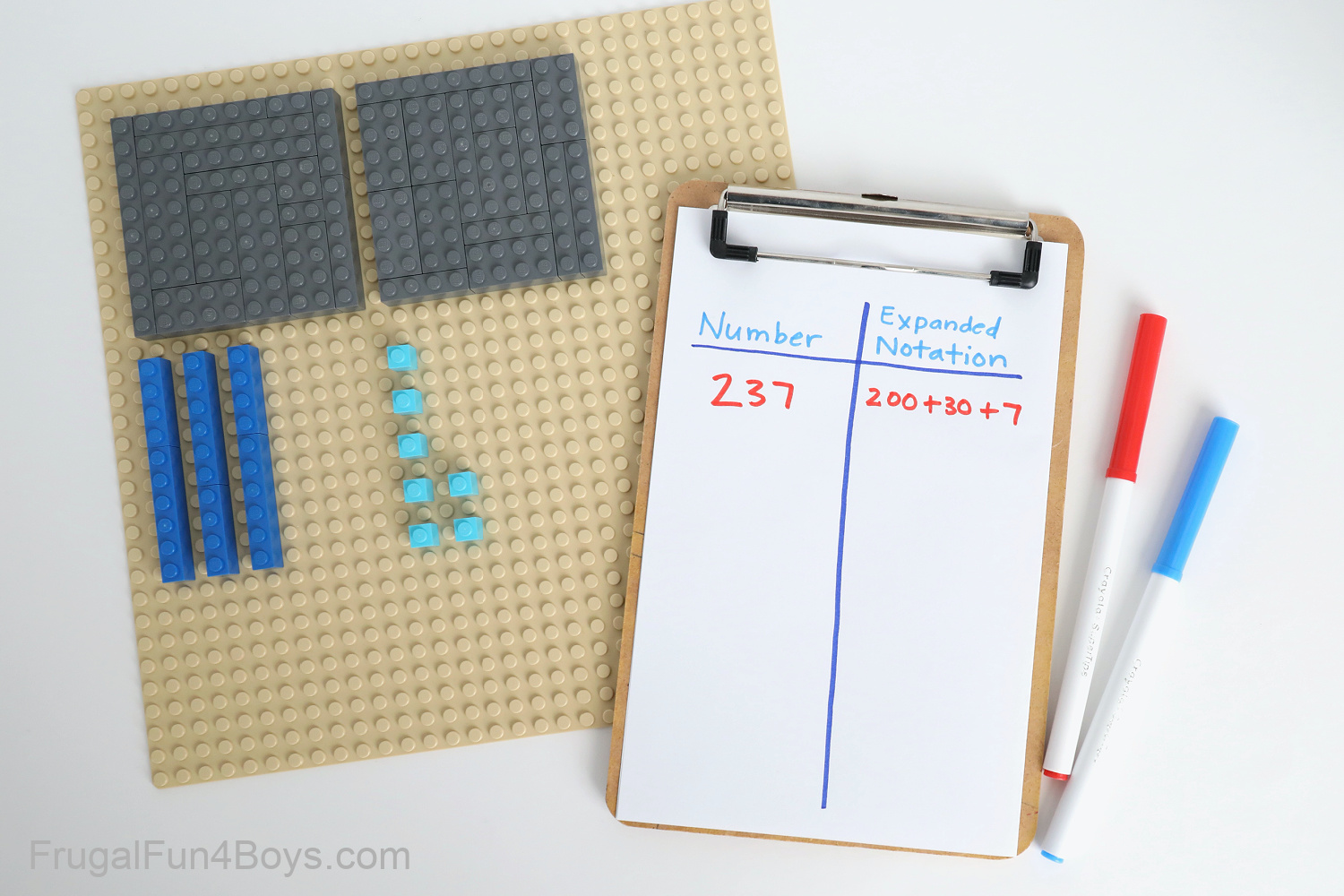
Each dot counts as one. So for hundreds, build a 10 x 10 square using any bricks that fit together to form that shape. Use 1 x 10 bricks for the tens, or combine smaller bricks to make the tens.
This is a great option if you don’t have a set of base 10 blocks! Also, building the numbers helps kids visualize the actual quantity that corresponds to that number.
Here’s another LEGO Place Value Activity for younger kids who are just getting started with tens and ones!
Place Value Activity #3: Make the Biggest Number Game
This is super simple, but a great way to check whether or not your kids are understanding place value!
Grab a deck of cards, and remove the face cards. Ace is 1, or you can remove the aces too if that’s easier. This is a great two player game. Each player draws three cards. Arrange your cards to make the greatest 3-digit number you can! Then the player with the larger number gets to keep all 6 cards.
When the deck runs out (it won’t divide evenly), see which player has the most cards!
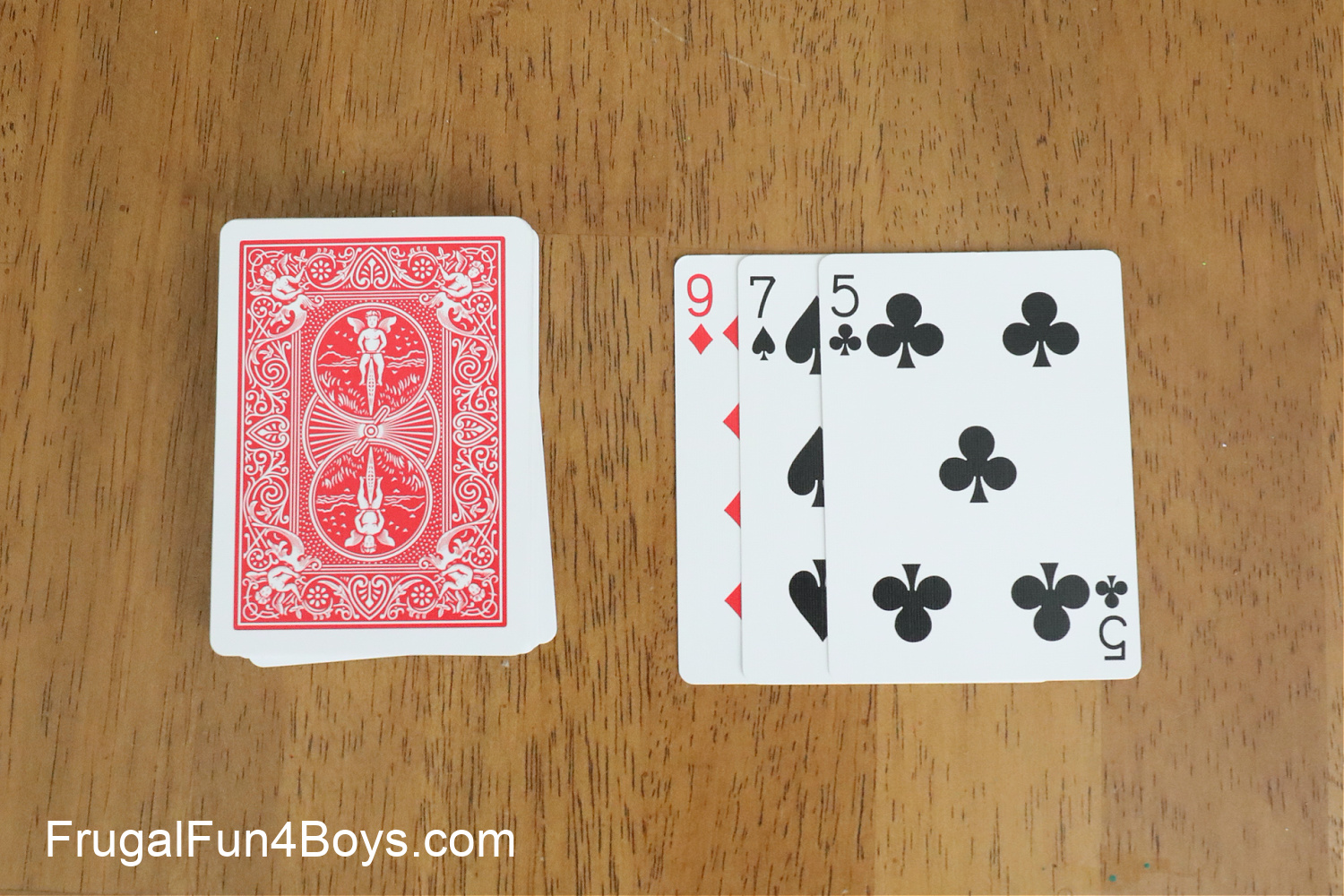
Place Value Activity #4: Number Words to Digits
A good test of whether or not kids understand place value is whether or not they can translate number words to digits. I made some number word cards out of index cards and magnetic tape.
Be sure to choose some numbers that have a 0 in the tens digit, like four hundred five.
It’s correct grammar to write the number without “and,” unless the “and” is marking the decimal point. I wrote a couple with “and” (because I knew it would be easier for my daughter who is just getting started with this), and then most of the cards did not have the “and.” You can choose how you’ll do it!

My 7 year old put the cards on our white board and wrote the numbers with dry erase marker! Always more fun than pencil and paper.
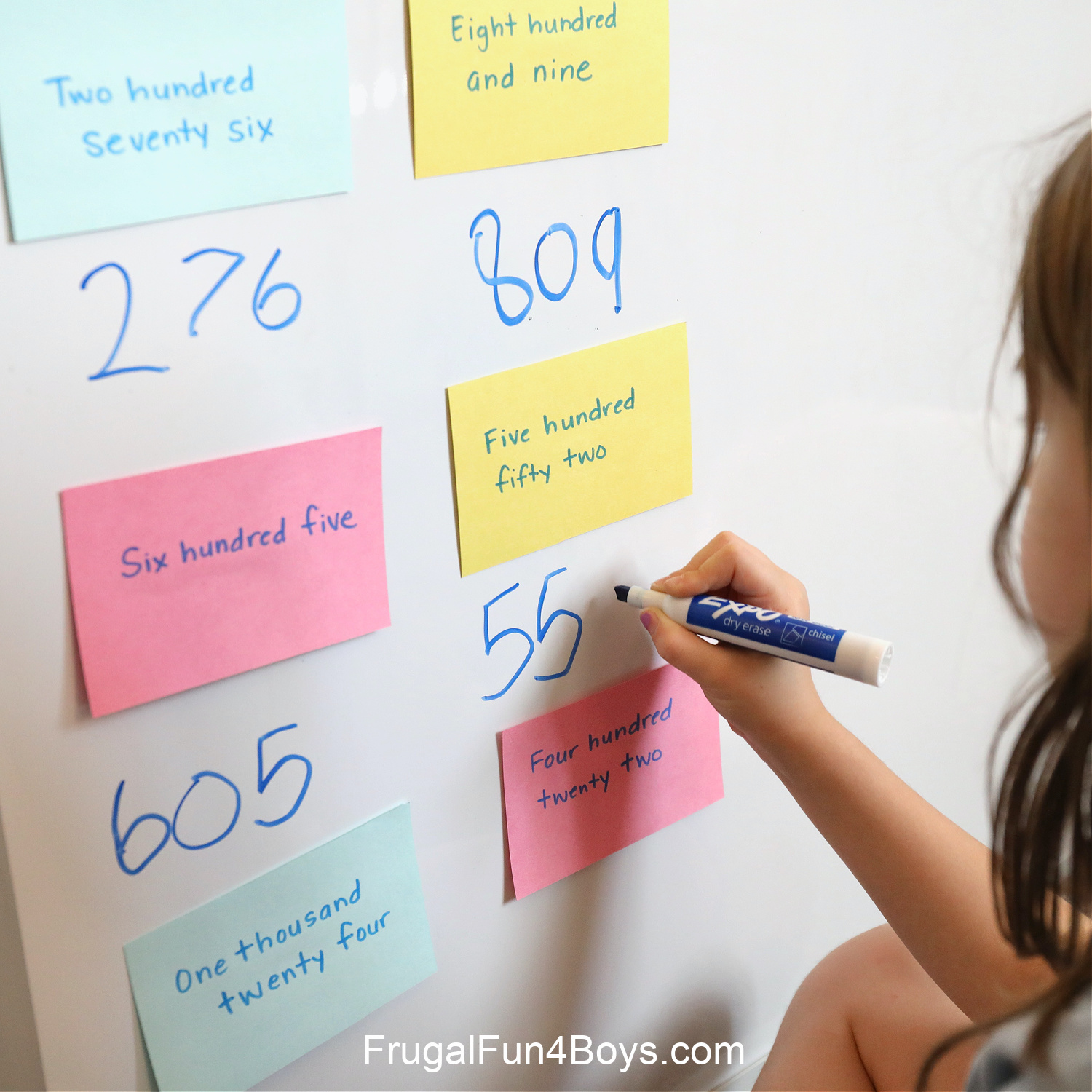
Have fun with place value!
Need more math ideas? Here’s a collection of Hands-On LEGO Math Activities on a variety of topics. Build a working LEGO balance, learn about probability and graphing, build a 3D multiplication graph, and more!

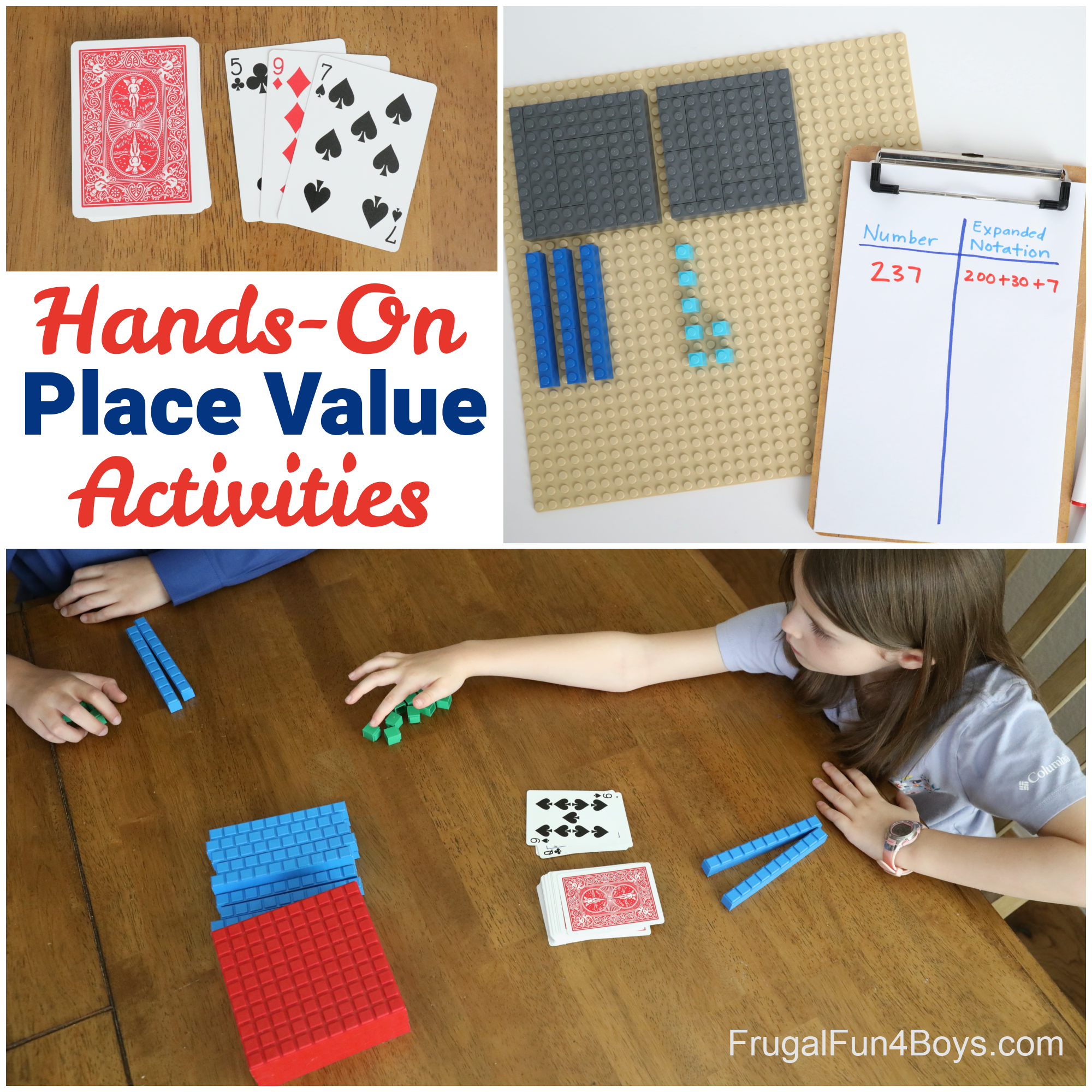

0 Comments
Post a Comment